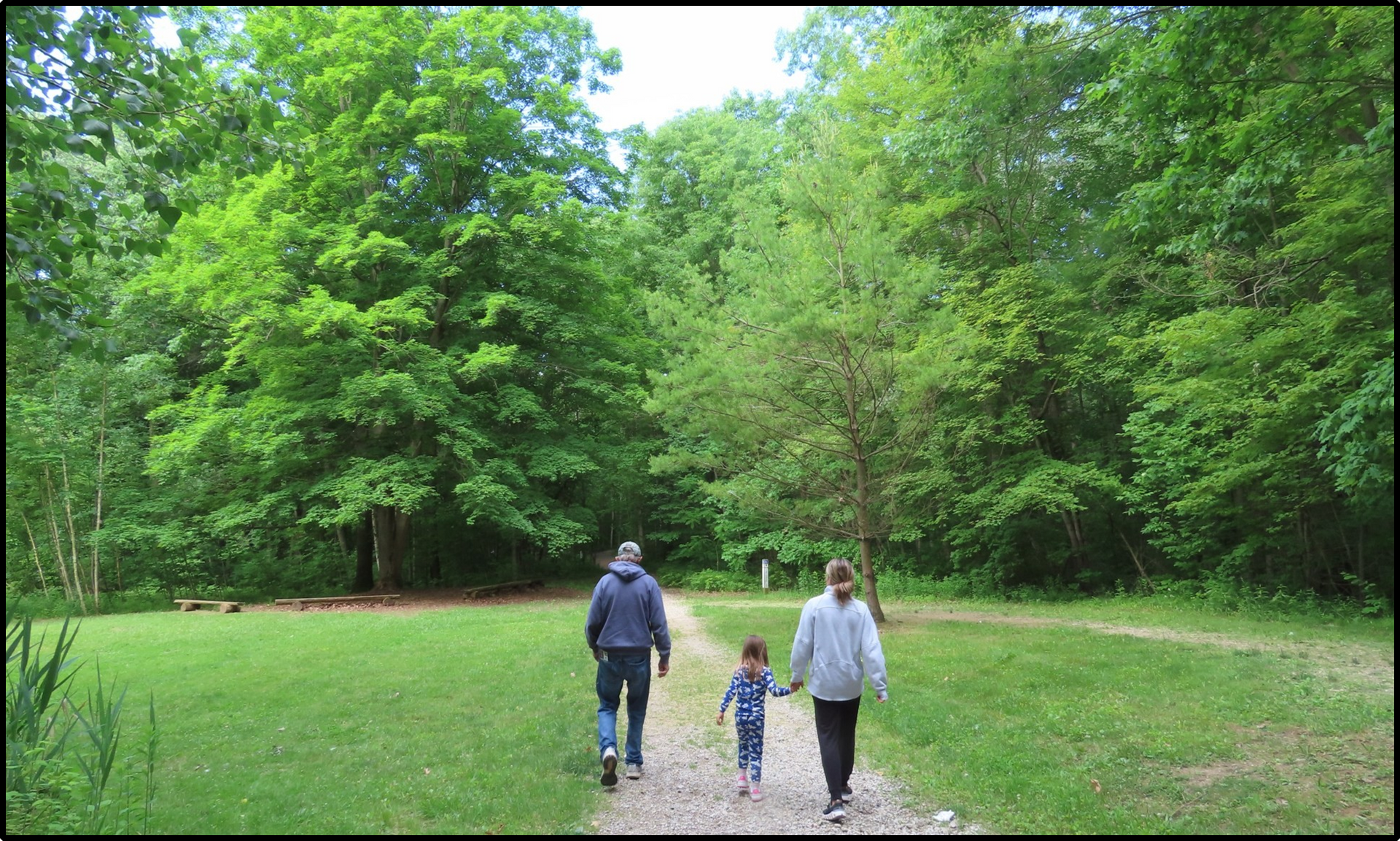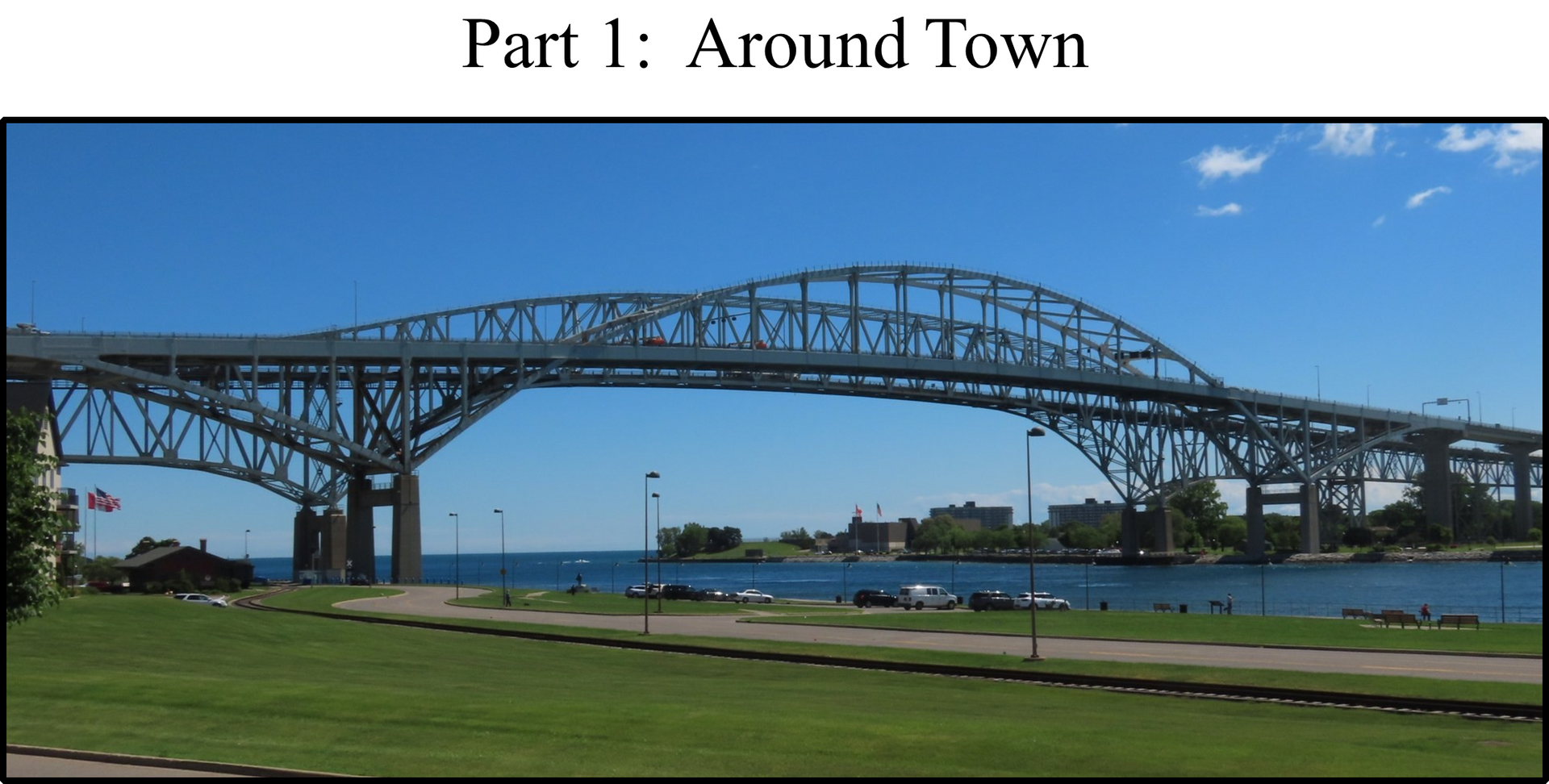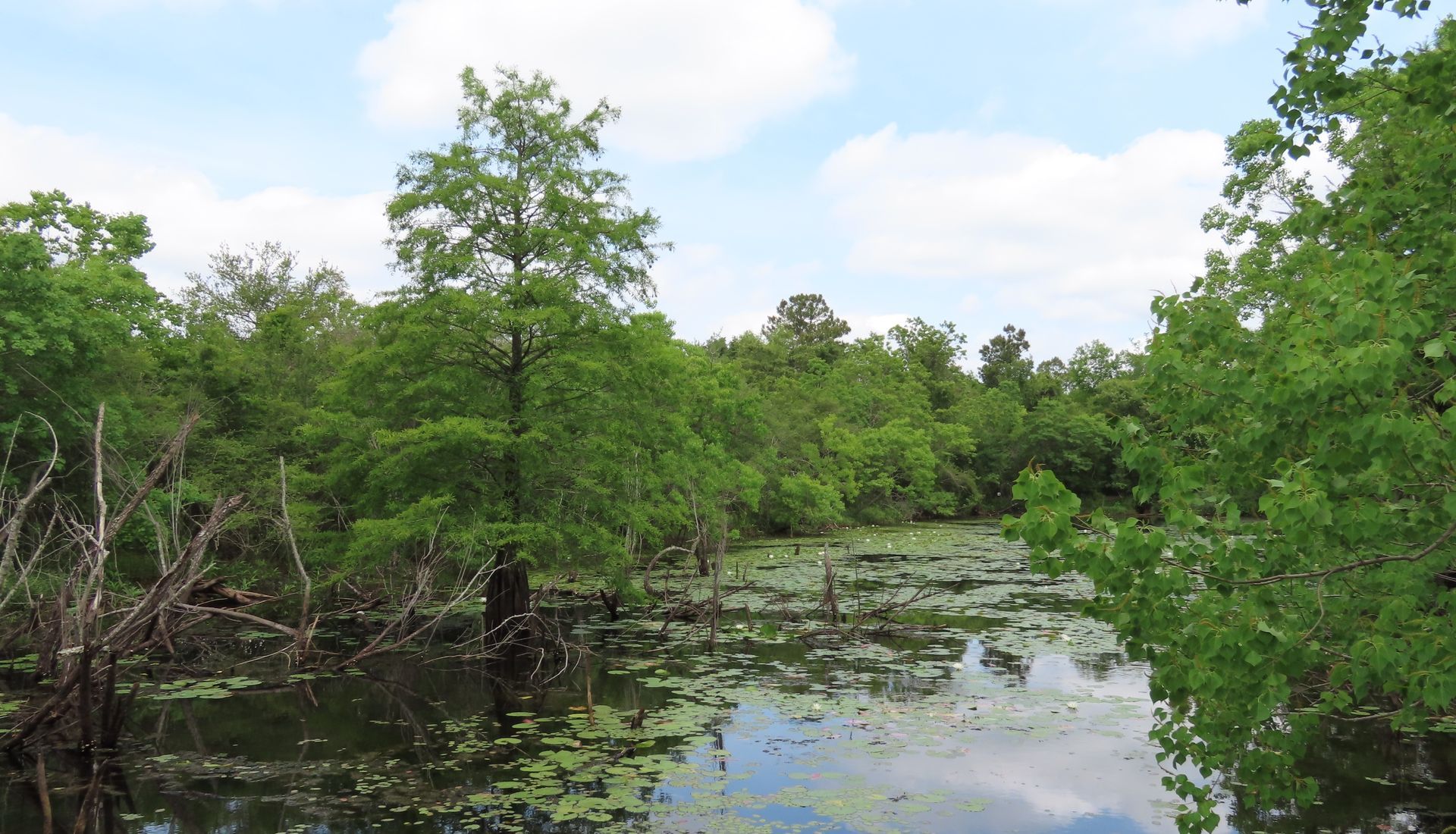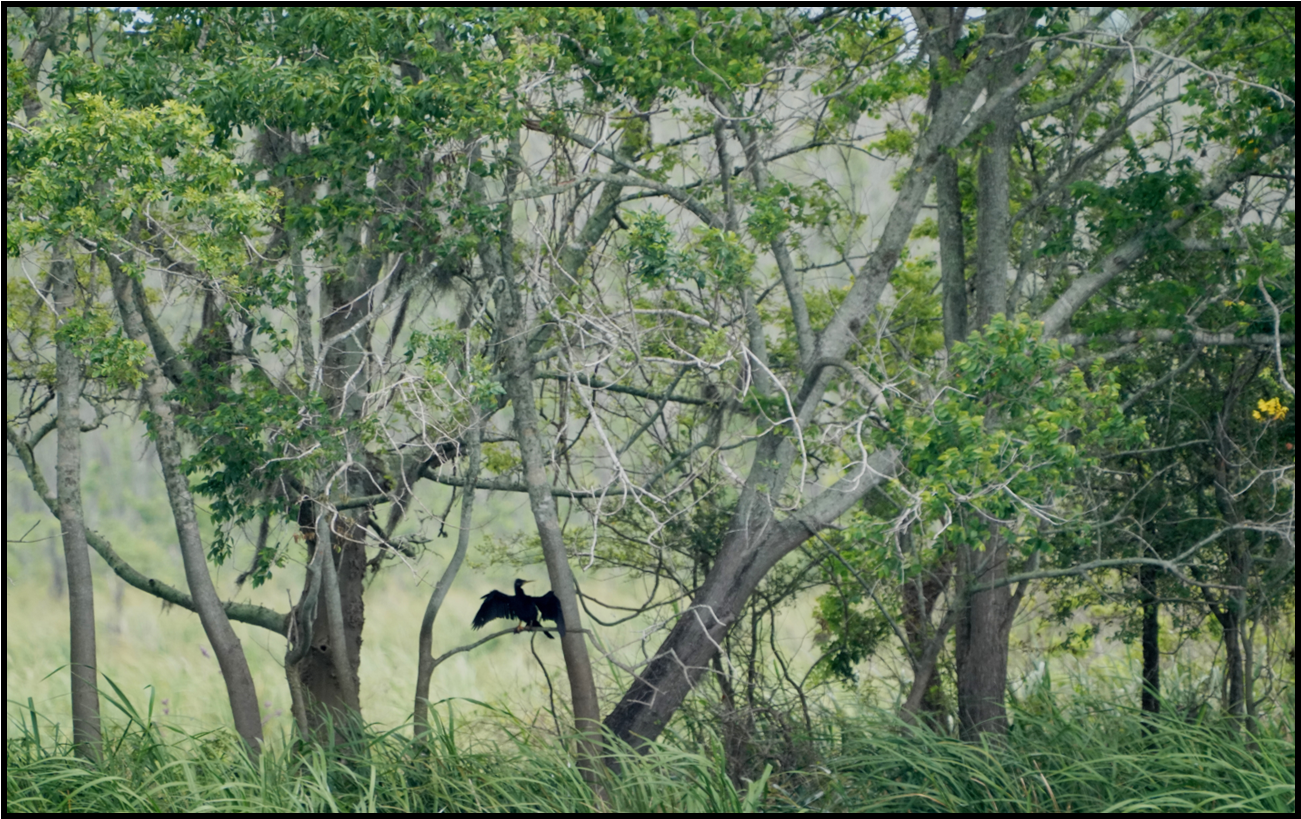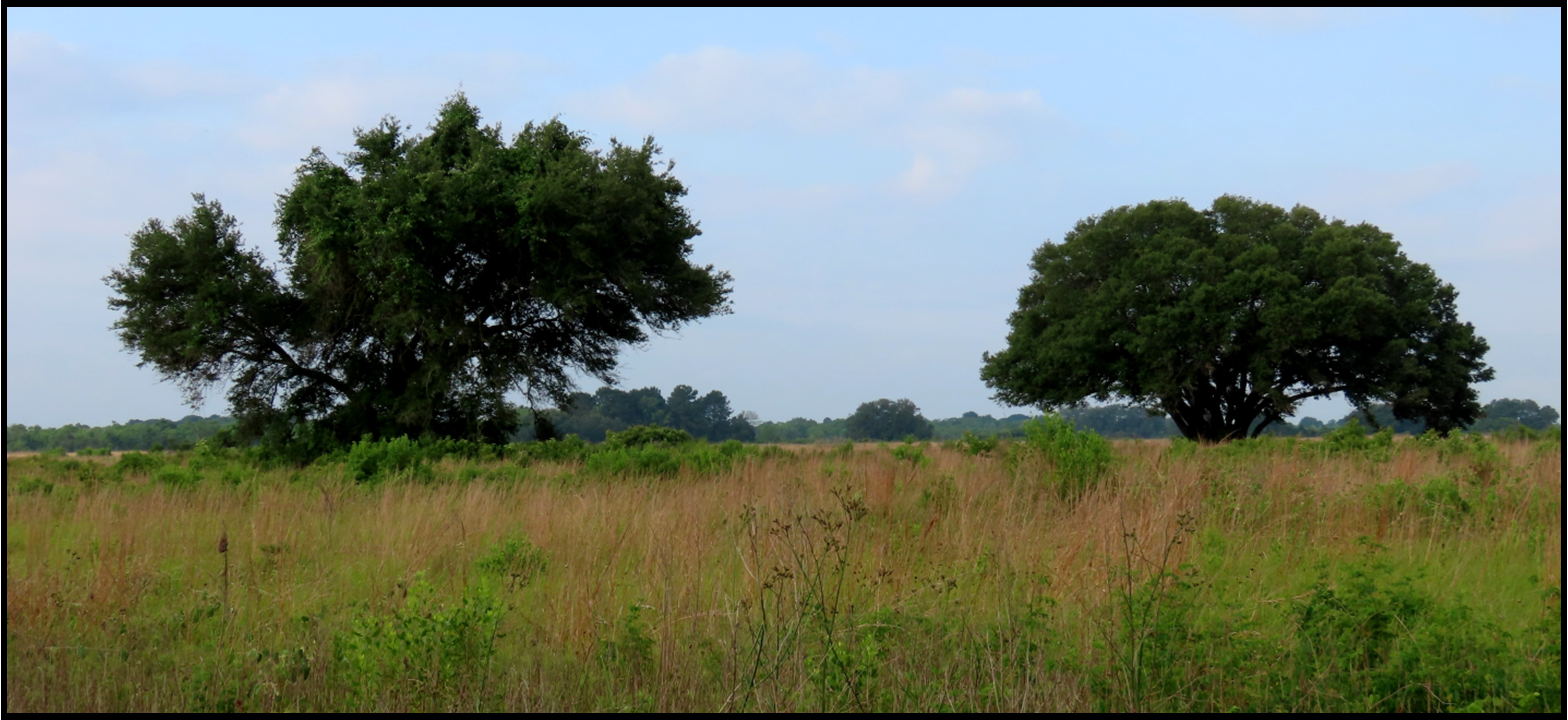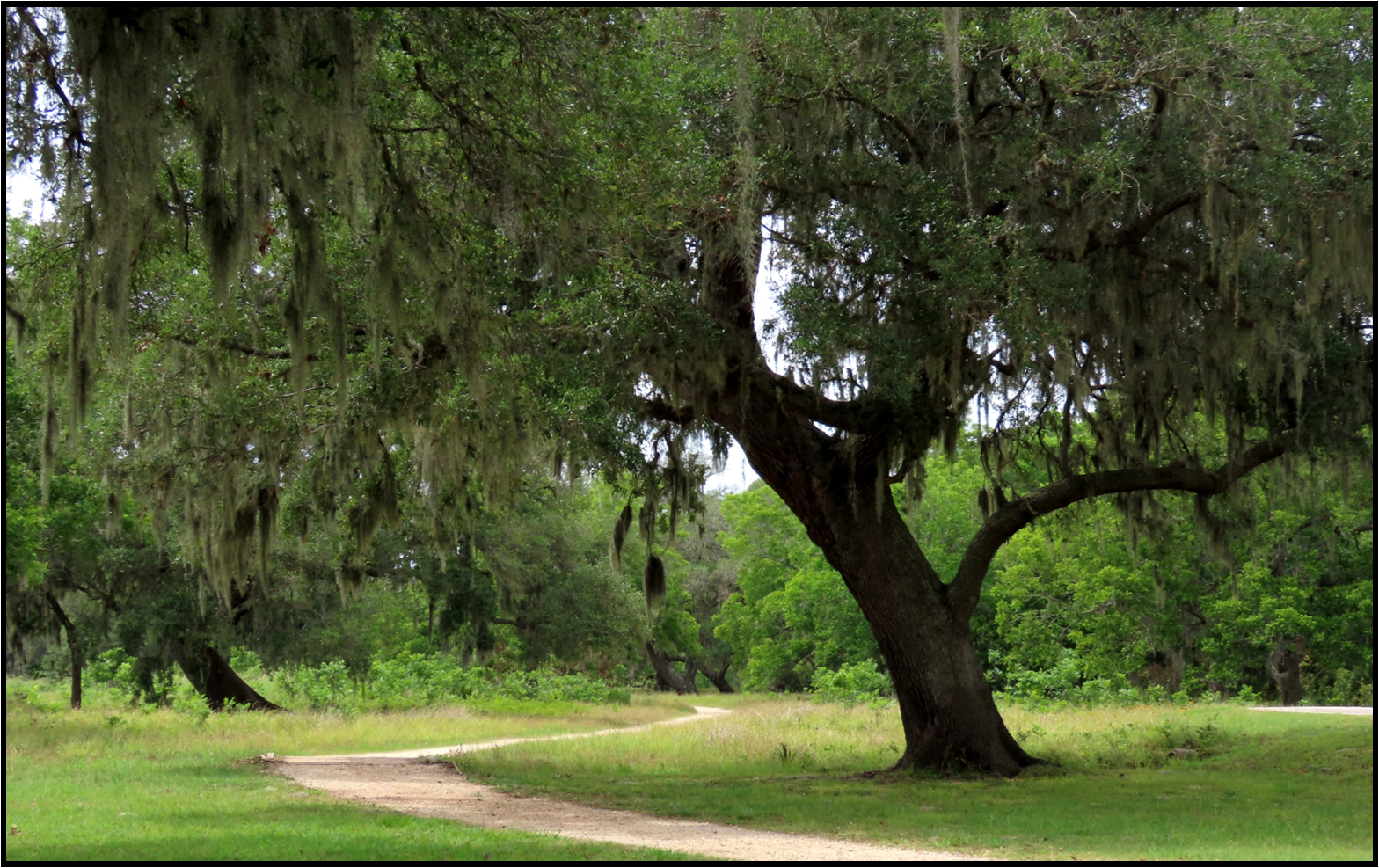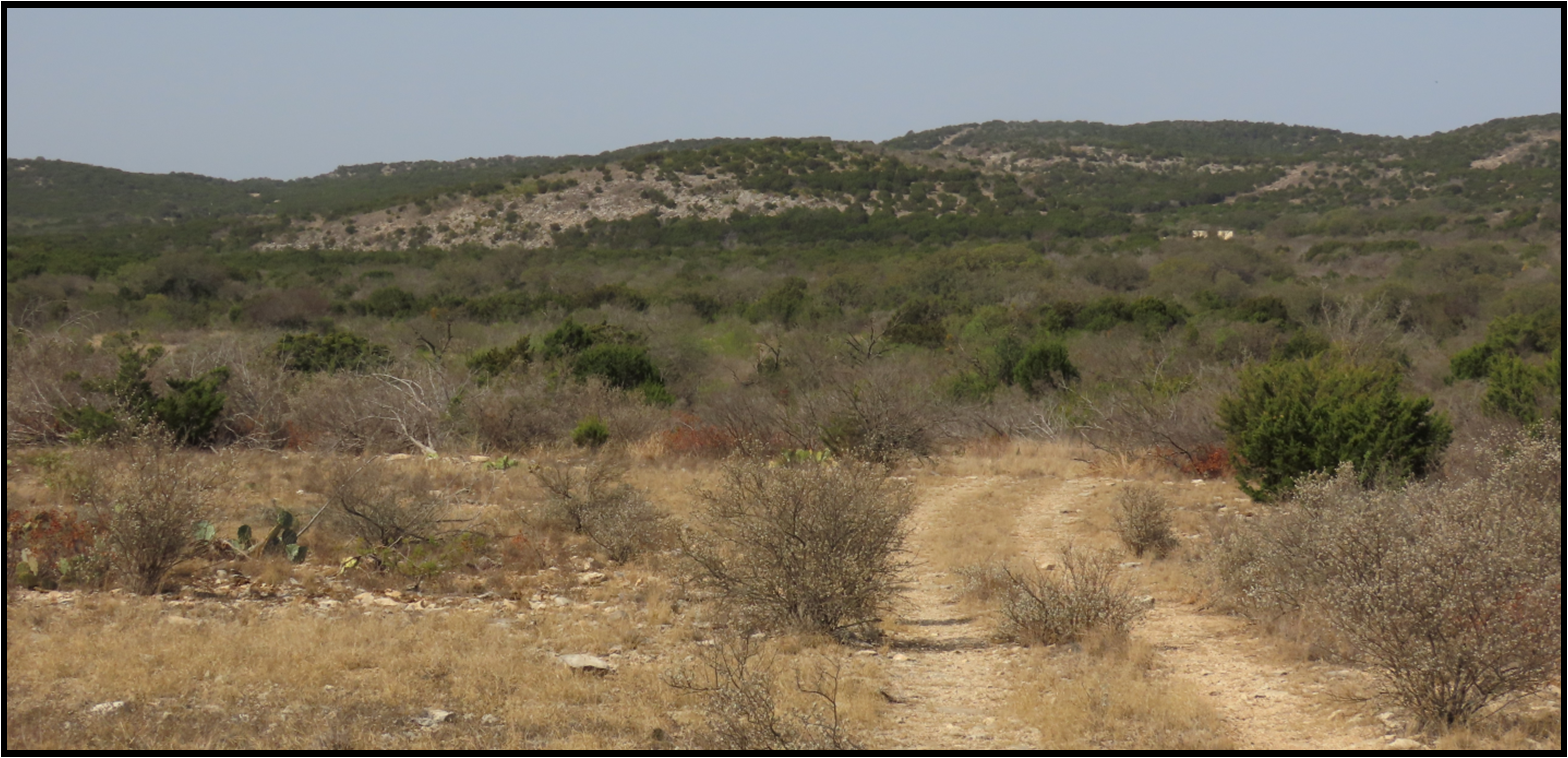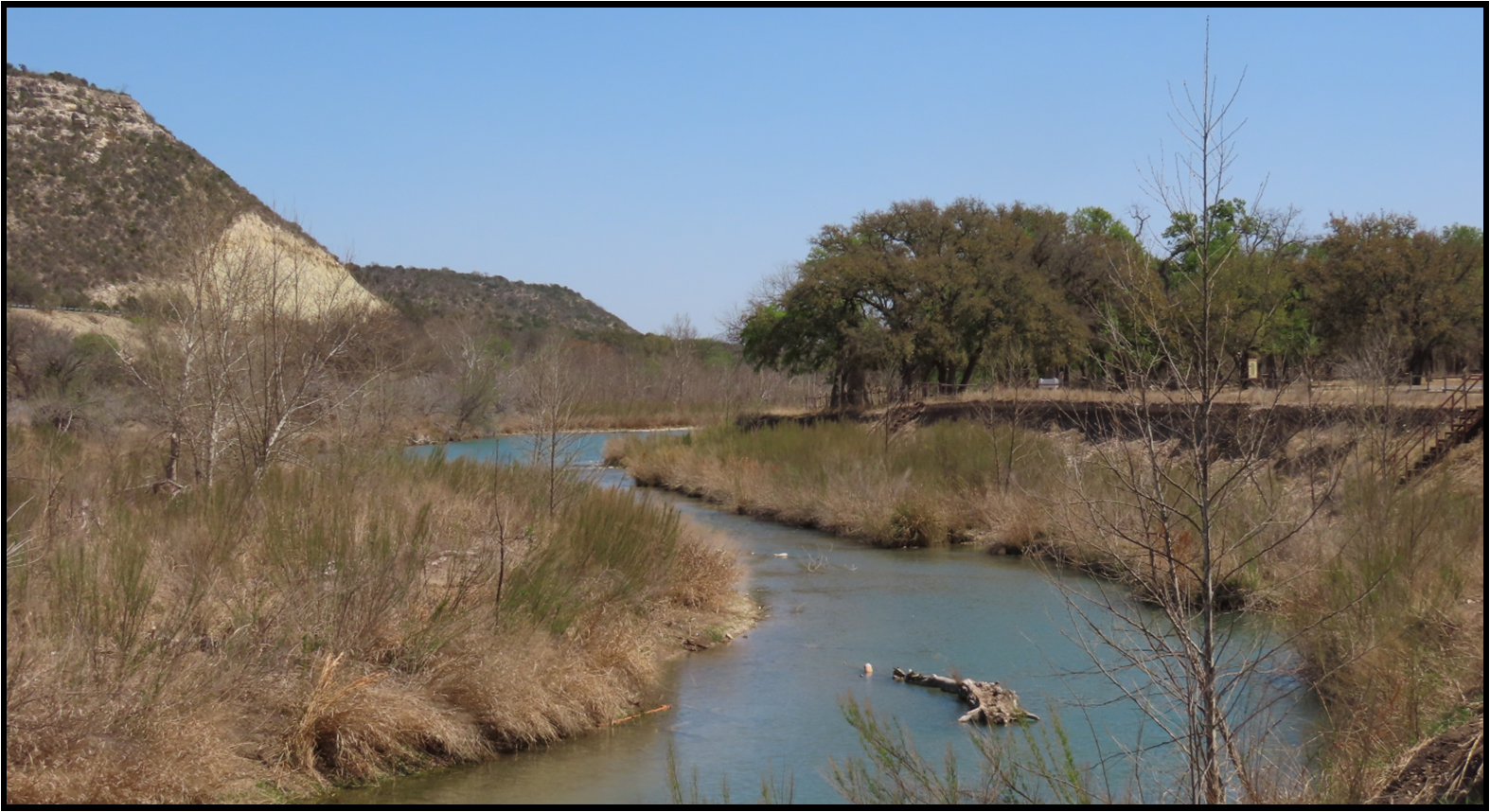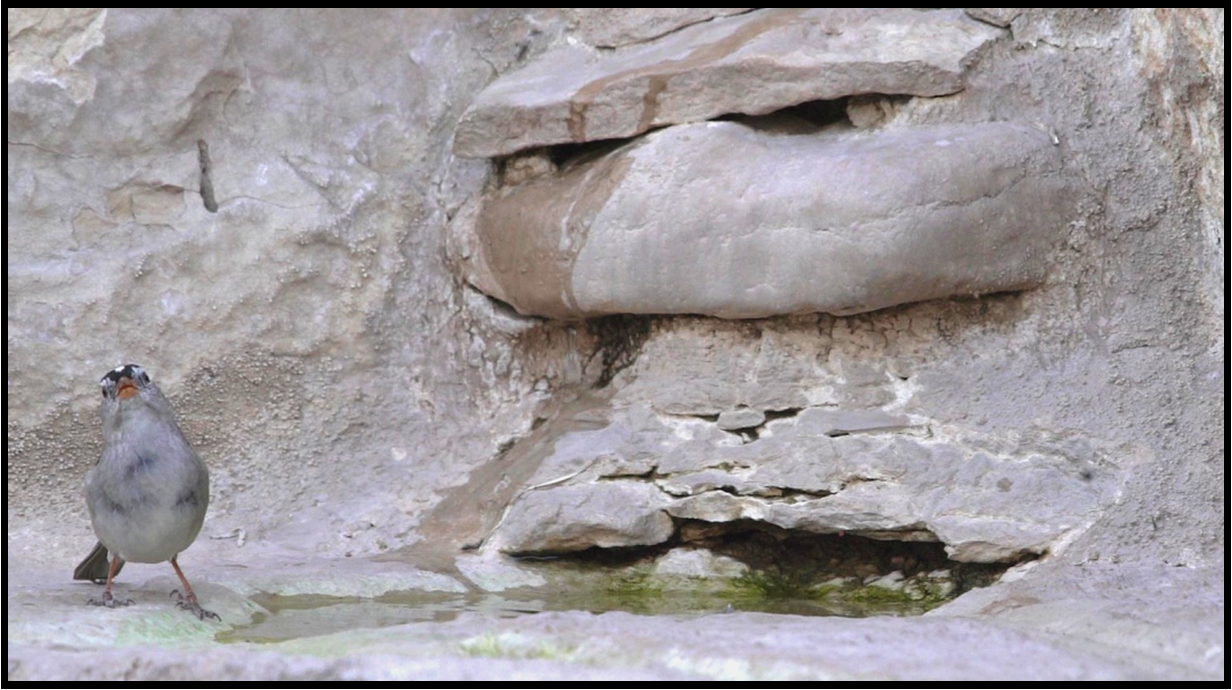Day 6 - Mustang Island 2
© 2025 Alamo Birding Services LLC
By Mary Beth Stowe
Started out pre-dawn the next morning, adding a beenting Common Nighthawk to the trip list right in the parking lot! There wasn’t a hint of any utility work, so I found The Willows fine, only it was as I suspected: a fancy residential area with a few trees that looked good as a migrant trap. No migrants around today (it was already in the 80s) so I found the hotspot designated as the area between Port Aransas and the state park, and just covered that stretch by stopping every half mile and scanning for falcons. There were still no occupants at the nesting platforms, but one stop did have a White-tailed Hawk perched on a gas well! That’s when I discovered (presumably) that I had left the foot for the cameras at the hotel, so I went blasting back (but not before stopping for a pair of Mottled Ducks and Black-necked Stilts), got back inside, and couldn’t find a trace. The nice front desk gal said she’d let me know if housekeeping found anything, but I figured it had to be buried somewhere! And while checking the towel that I use to wrap The Monster, there it was, on the body of the camera instead of on the lens, where I usually put it! I felt so dumb – I told the gal I had found it, so we were both relieved, but I felt like I had wasted a half hour by coming back. But I had to remind myself that God’s timing is perfect, and everything is for a reason, even if it isn’t obvious at first!
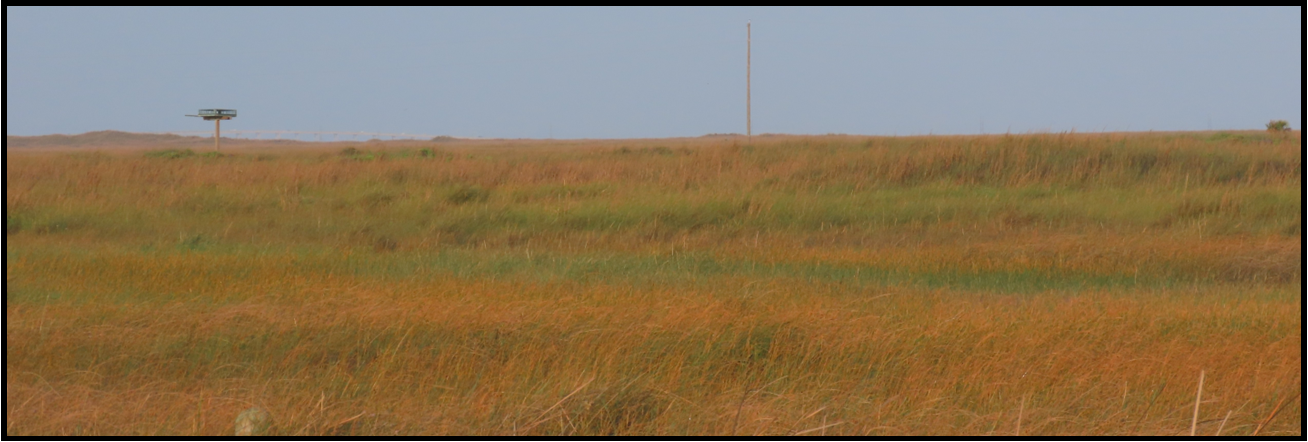
Coastal prairie habitat with Aplomado Falcon nesting platform
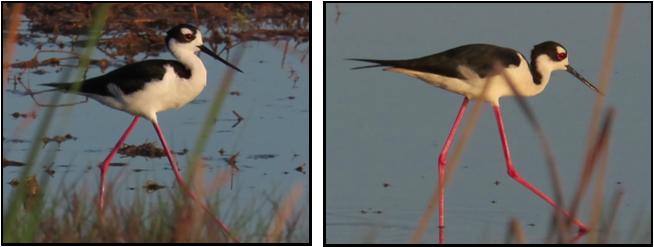
Black-necked Stilt - you can even see the red eye!
So back up I went, and miraculously that hawk was still there! So I took some video and then continued the Breeding Bird Survey (BBS) style coverage, with no falcons. So then I started exploring every west-side access point I could; what’s confusing is that there are two eBird hotspots called Mollie Beatty Coastal Habitat Community, so I have no idea which place I was really at! I believe Fish Pass had a couple of access points (one I had been to the day before); one of them had a feeding frenzy going on in the distance with spoonbills, ibis, several types of herons, and Neotropic Cormorants all flying around and going nuts! Flushed a Spotted Sandpiper when I pulled up, and heard a Black-bellied Plover somewhere across the way. Then I went over to the “official” Fish Pass spot, where a young Reddish Egret was feeding fairly close, but in terrible light; I had to sneak around the back of the dunes to get in a better position! Was able to bag a Caspian Tern here as well, and Clapper Rails were calling at most of the spots. A Willet put in a good performance by singing right outside the car, then later doing a flyby! Swung back in to the state park to use the facilities, but also asked the ranger if he knew of any Aplomado status; he said someone reported one along Beach Access #3 about a week ago, so I headed there next, but came up short (just added Sanderling and turnstone for the day, and the beach was pretty soft to boot).

Fish Pass
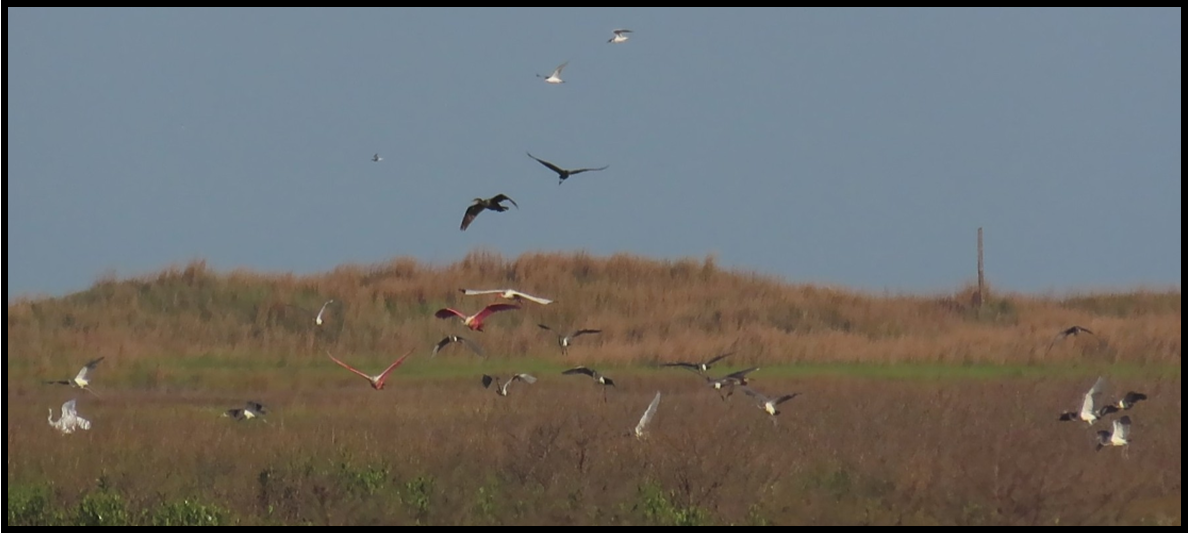
Multi-species feeding frenzy
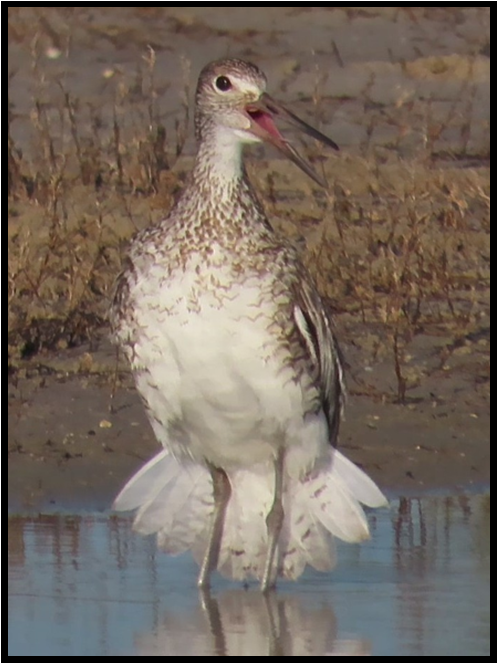
"Singing" Willet
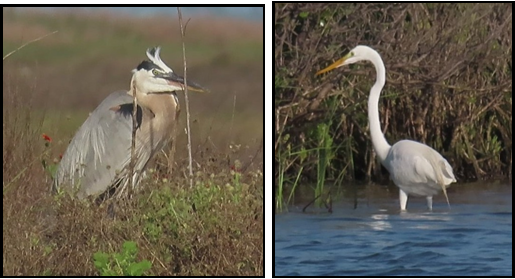
Great Blue Heron (left) and Great Egret

The “other” Fish Pass
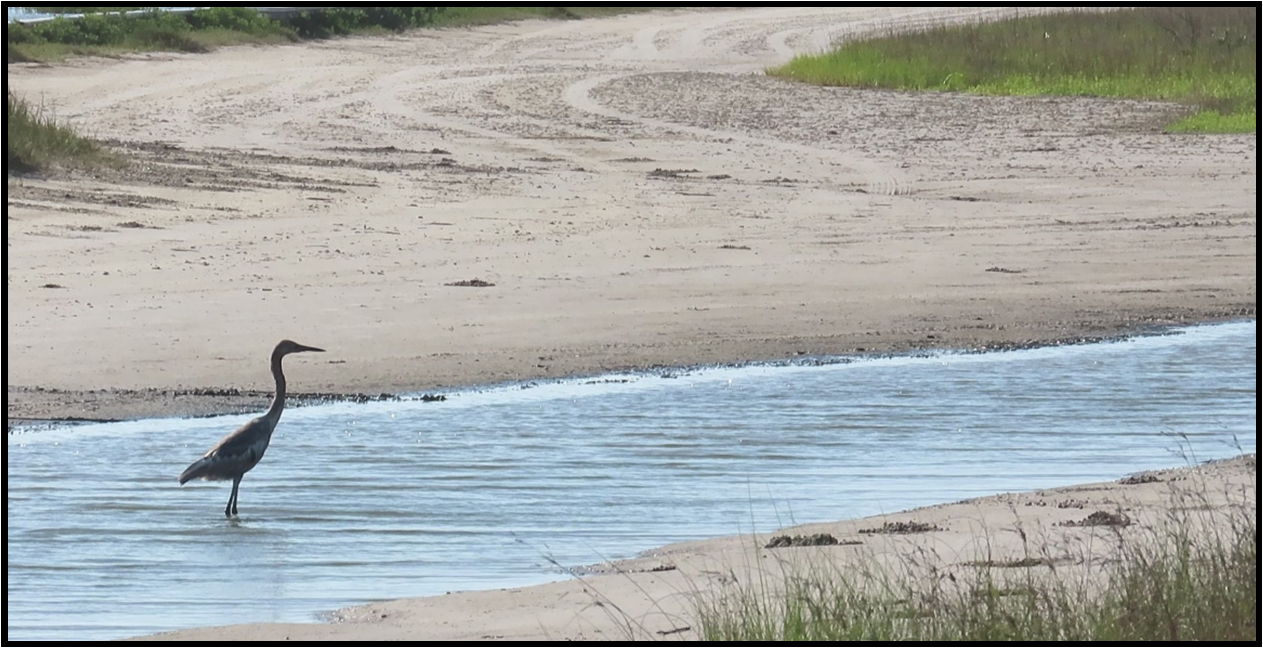
A young Reddish Egret provided most of the entertainment at this spot!
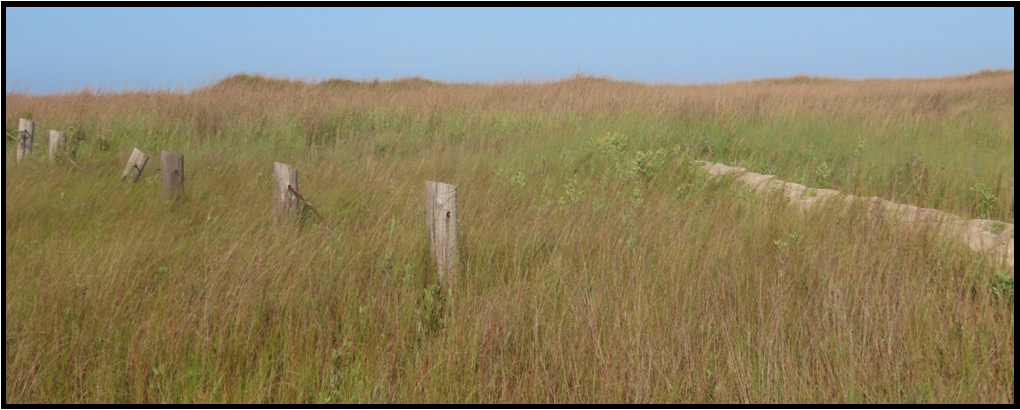
The dunes I had to sneak around to get him in better light...
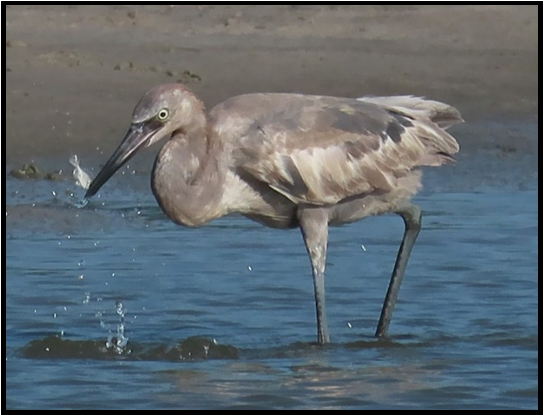
He does a half-hearted “dance” before nabbing another bait fish!
The next access was an “Old Port Isabel Road” situation (i.e., impassable), so I turned around and headed to the next spot, which may have been the “Corpus Christi Bayside” hotspot; it had a big parking area with a lot of trucks already parked there (lots of guys were out in the bay fishing). Got a nice Little Blue Heron coming in, but the highlight here was a white morph Reddish Egret! A Great-tailed Grackle also displayed on top of the truck bed next to me, so that was fun! “Seek” once again saved the day by IDing a couple of cool plants: Sea Ox-eye and Alkalai Heliotrope! A Gull-billed Tern batted by at one of these spots, but I forget where…

Impassable road to the next designated hotspot...
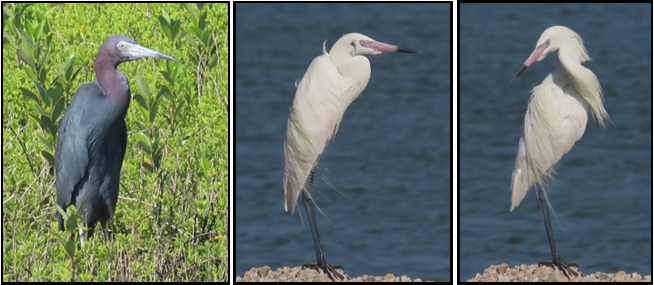
The next accessible spot had a Little Blue Heron (left) and a white morph Reddish Egret!
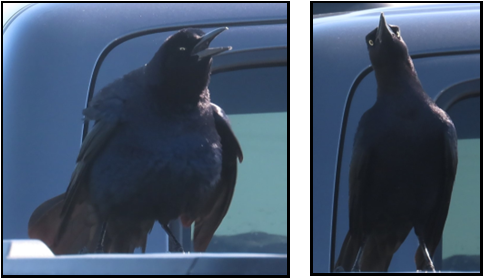
Great-tailed Grackles may be pesky, but they sure are entertaining!
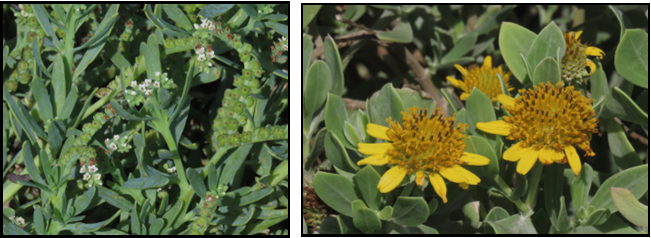
Alkalai Heliotrope (left) and Sea Oxeye (right)
The next spot surprisingly was not an eBird hotspot, but should have been as it’s a designated wildlife area: Packery Flats Coastal Habitat! [Update: After doing a little research after getting home I discovered that that was the second Mollie Beatty hotspot…] This involved a hike down to the water, but it was only 15 minutes in, and what thrilled me halfway in was a pair of Wilson’s Plovers that gave great video ops! I didn’t notice until I got home and looked at the videos more closely that the female was banded! So I made some screen shots and sent them to Stephanie Bilodeau, a local biologist specializing in plovers, in case she knew anything about them, and she in turn passed them on to a bander named Dave who miraculously was able to read the bands and confirmed she was a female he had banded several years ago, and she had been coming back to those flats to breed every year since!
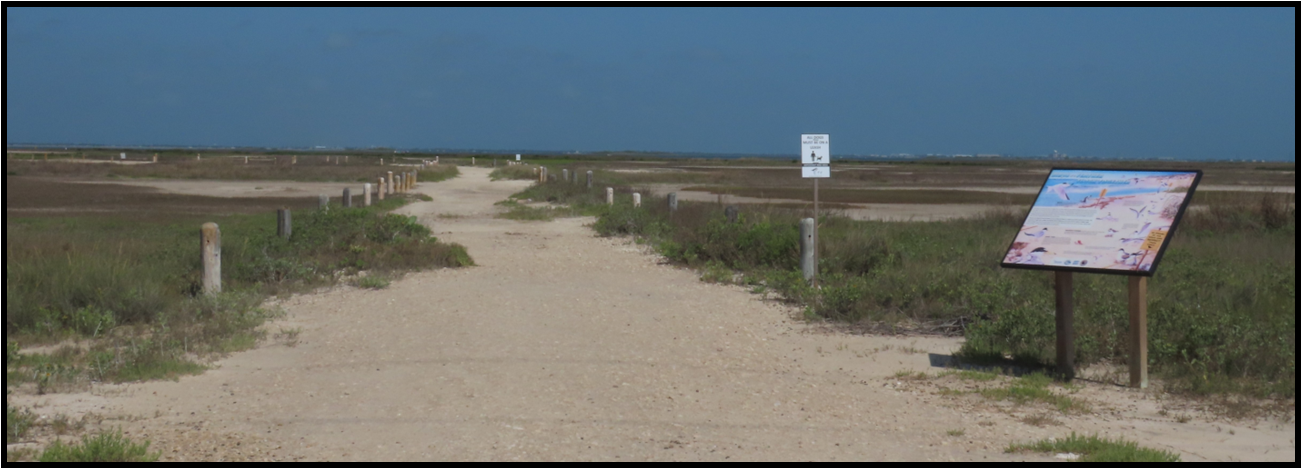
Packery Flats interpretive sign and trail to the nesting habitat

The highlight was this pair of Wilson’s Plovers - the female (above) was banded and had been returning to this spot for several years!

Male Wilson's Plover
At the end of the trail was the roped-off Least Tern nesting area, so I spent a few minutes there waiting to see if anything else would come by (spooked an Osprey who unfortunately didn’t come back). Another (or maybe the same) white morph Reddish Egret was fishing, but was apparently distracted by the plane flying over as he looked up and cocked his head at it as if to say, “Wow – now that’s a big bird!”
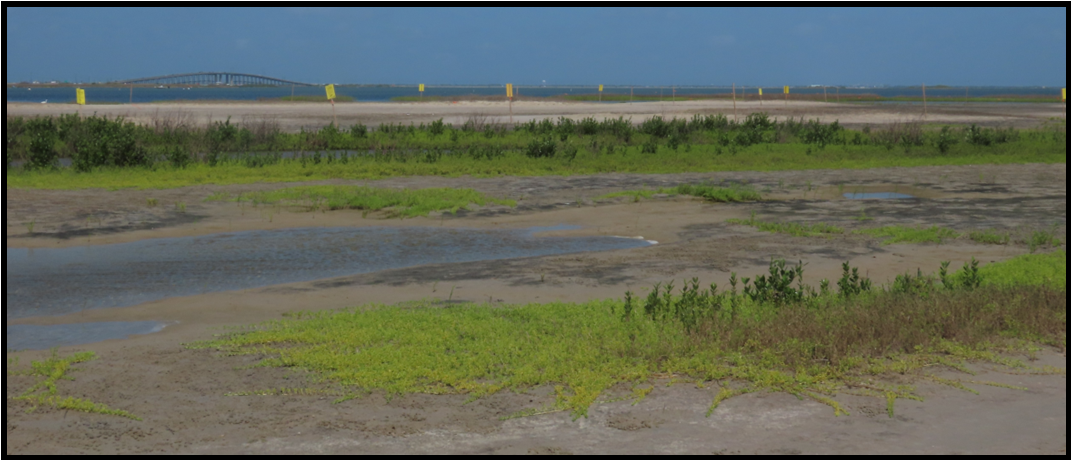
Least Tern nesting area with the JFK Causeway in the distance

Least Terns

Reddish Egret watching a plane go overhead
It was getting late, but I wanted to check the Packery Channel access just before the bridge; when I pulled up there was a little wetland with a couple of ibis, a spoonbill, and a Tricolored Heron, but they all took cover the minute I got set up! (A Willet was very cooperative, however, and eventually the ibis and Tricolored allowed some filming…) I also wanted to check out Packery Channel County Park, and was surprised by the very nice boardwalk and interpretive signs! It obviously was a migrant trap (and looked like a terrific one to boot), but the migrants were long gone (and it was getting hot as well), so the only thing I added for the day there was a singing Painted Bunting . Most of the oddball plants were identified by the signs, but Seek helped me out with a weird-looking vine entwined around the railing called Sorrelvine!
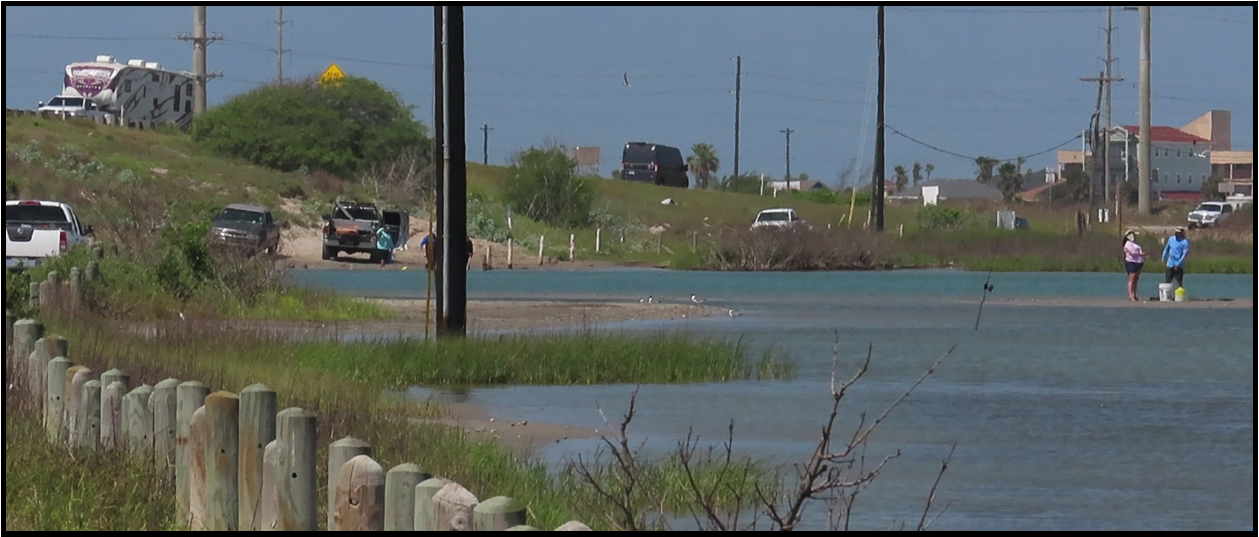
The very popular Packery Channel!

Tricolored Heron

Willet bracing against the wind

Checking out the Birding Trail at Packery County Park
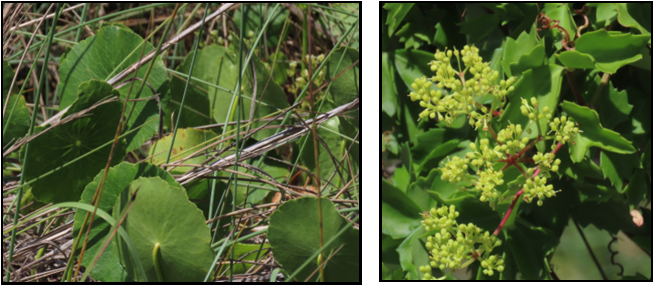
Largeleaf Water Pennywort (left) and Sorrelvine (right)
That was it for me, so headed to the Valley, picking up a few day birds along the way. It was good to get back (even if it was 97 degrees), and it was fun to have a Kiskadee welcome me home pulling in to the complex! The list was short with only 93 species, but the quality couldn’t be beat!
